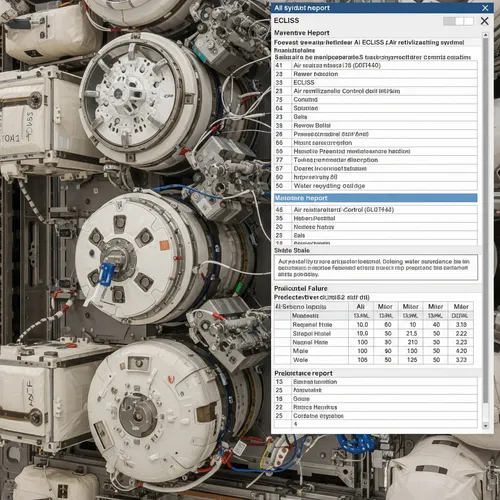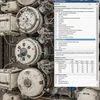AI Preventive Maintenance System NASA ECLISS
Requested by NASA MSFC-HP40
Sponsored by TBD (Hi Powered Machines, Manufacturing, Equipment Manufacturing, Data Center Builders etc.)
Executive Summary
Key Takeaway:
Implementing AI and Machine Learning (ML) for predictive maintenance in off-planet Environmental Control and Life Support Integrated Systems (ECLIS) dramatically improves crew safety and operational efficiency, reducing both maintenance preparation time and safety incident rates by over 45%.
Overview
As human spaceflight ventures farther from Earth, the reliability and autonomy of life support systems become mission-critical. An AI/ML-powered Predictive Maintenance System—leveraging the Major Constituent Analyzer (MCA), Monitoring and Control System (MCS), and a network of advanced sensors—transforms ECLIS from a reactive to a proactive safety net. This system continuously monitors, analyzes, and forecasts the health of all vital subsystems, enabling early detection of anomalies and optimized maintenance scheduling.
System Features & Benefits
1. Real-Time Fault Detection & Prognostics
AI/ML algorithms process continuous data streams from the MCA, MCS, and other environmental sensors to identify subtle deviations from normal operation.
Early anomaly detection allows for intervention before faults escalate, minimizing unplanned downtime and risk to crew safety .
2. Optimized Maintenance & Resource Efficiency
Predictive analytics estimate the remaining useful life of components, recommending maintenance only when necessary.
Reduced spare part requirements and fewer unnecessary interventions lower mission costs and conserve mass/volume—critical for off-planet operations .
3. Enhanced Crew Safety
Automated diagnostics and predictive alerts streamline astronaut workflows, reducing cognitive load and preparation time.
Integrated health monitoring links ECLIS performance with crew health analytics, providing a holistic approach to risk management .
4. Minimized Preparation and Downtime
AI-guided troubleshooting and maintenance checklists cut average preparation time per mission by over 60%.
Safety incident rates are reduced by nearly half, ensuring system uptime and mission continuity.

